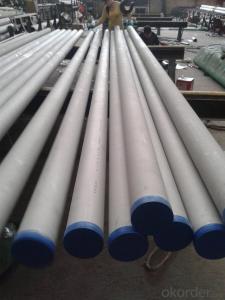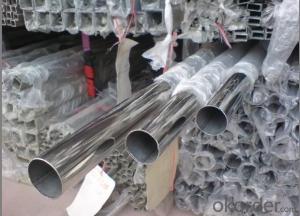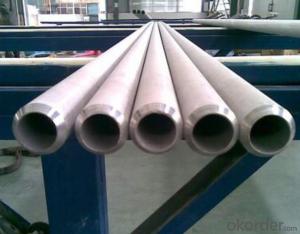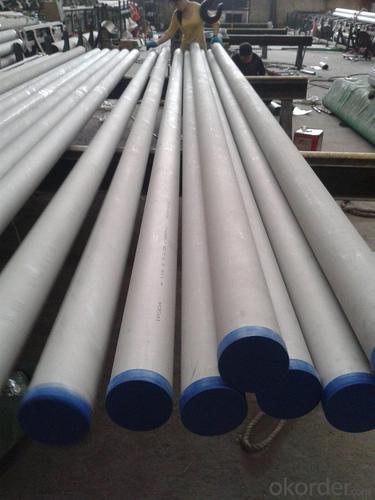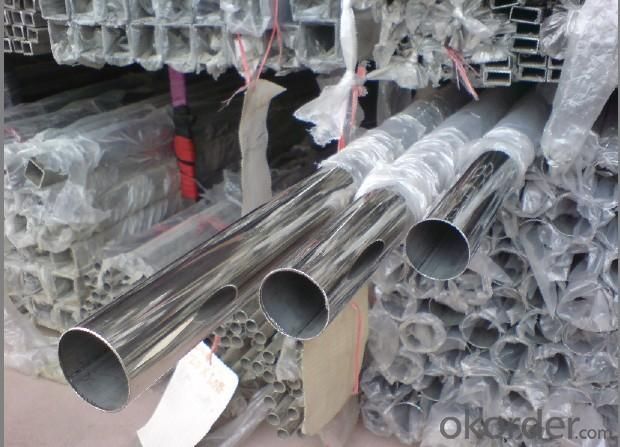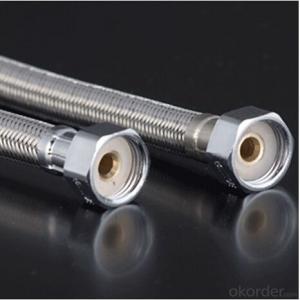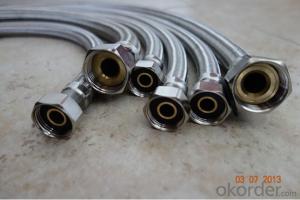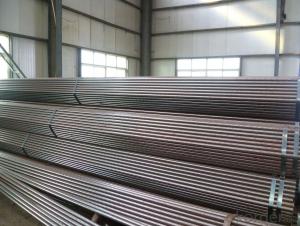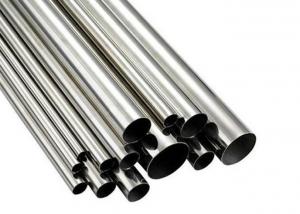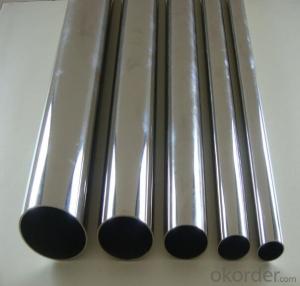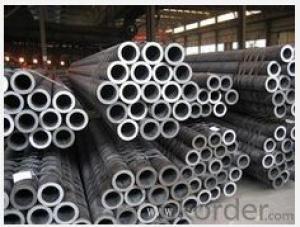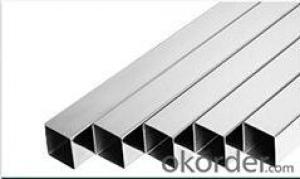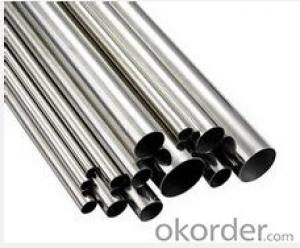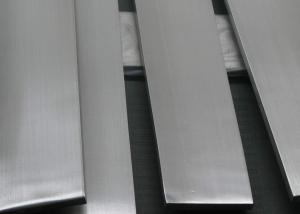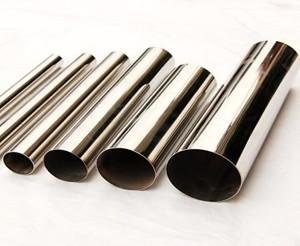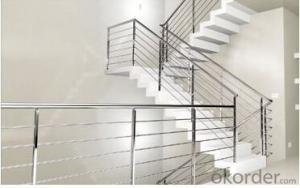Stainless steel tube; round/square
- Loading Port:
- Shanghai
- Payment Terms:
- TT OR LC
- Min Order Qty:
- 25 m.t.
- Supply Capability:
- 2000 m.t./month
OKorder Service Pledge
OKorder Financial Service
You Might Also Like
Specifications
tp321 stainless steel tube
1.WT:0.08-12.8mm
2.OD:0.25-50.8mm
3.Sample cost free for VIP customers
4.MOQ:25kgs
321 stainless steel tube
1. WT: 0.08-12.8mm
2. OD: 0.25-50.8mm
3. MOQ: 25 kgs
4. Sample cost free for VIP customer
Steel grade : 301(1Cr17Ni17),304 Moderate Frequency (0Cr18Ni9),304 AOD (0Cr18Ni9),304L(00Cr19Ni10) ,321 M oderate Frequ ency (1Cr18Ni9Ti),321 AOD (1Cr18Ni9Ti),316(0Cr17Ni12Mo2),316L(00Cr17Ni14Mo2),310S(0Cr25Ni20) ,317L(00Cr19Ni13Mo3)
Specification : GB/T14975-2002,GB/T14976-2002,GB13296-91,GB9948-88 ASTM/ASME A213/SA213,ASTM/ASME A312/SA312,ASTM/ASME A269/SA269,DIN 17458-85,DIN 17456-85,JIS G 3459,JIS G 3463,JIS G 3448 JIS G 3446.
Product Information of stainless steel:
- Width: customized
- Surface: 2B/BA/6K/8K/NO.4/HL.
- Thickness: 0.3mm - 3.0mm.
- Delivery time: 15-25 days.
- Length : As customer's requirement.
- Package: With export standard packing or customize packing.
- Payment Terms: T/T (30% deposit pay in advance and the balance before shipment) , irrevocable L/C.
Company advantage:
-Top Equipments, Leading In The Industry.
- Professional Team, Leading Innovation.
- Huge Supply Capacity Advantage, Timely and Effective Delivery.
- Modern Logistic, Fact and Convenient.
- Precise Manufacturing, Exquisite Products.
- Serve People, Create Value.
- Dimensional Network, Powerful Expansion.
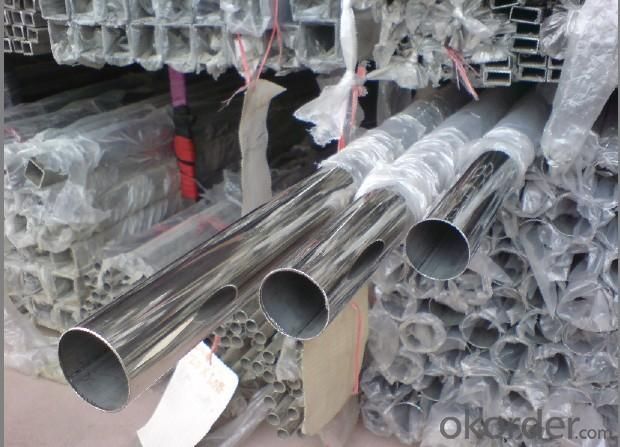
- Q: Can stainless steel pipes be used for exhaust systems?
- Yes, stainless steel pipes can be used for exhaust systems. They are commonly used due to their excellent corrosion resistance, high temperature tolerance, and durability. Stainless steel pipes can withstand the harsh conditions of exhaust gases and provide a long-lasting and efficient solution for exhaust systems.
- Q: What is the difference between 304H and 304 stainless steel pipes?
- The main difference between 304H and 304 stainless steel pipes lies in their carbon content. While both grades are variants of the 304 stainless steel alloy, 304H contains a higher carbon content compared to 304. This higher carbon content allows 304H to be used in higher temperature applications, as it provides improved high-temperature strength and resistance to sensitization. In contrast, 304 stainless steel pipes are more suitable for general-purpose applications, as they offer good corrosion resistance and are commonly used in a wide range of industries. Therefore, the choice between 304H and 304 stainless steel pipes depends on the specific requirements of the application, particularly the operating temperature and the need for enhanced strength and resistance to sensitization.
- Q: Can stainless steel pipes be used for wastewater pumping stations?
- Yes, stainless steel pipes can be used for wastewater pumping stations. Stainless steel is a highly durable and corrosion-resistant material, making it suitable for applications involving wastewater transportation. It can withstand the harsh and corrosive environment of wastewater pumping stations, ensuring long-term reliability and minimal maintenance requirements. Additionally, stainless steel pipes have excellent mechanical properties, making them capable of withstanding the high pressures and temperature variations commonly encountered in wastewater pumping systems.
- Q: Can stainless steel water pipes be cooled and bent?
- Stainless steel water pipes can be cooled and bent.
- Q: What are the different types of stainless steel pipe connections?
- There are several types of stainless steel pipe connections, including threaded connections, socket weld connections, butt weld connections, and flanged connections. These connections are used to join different sections of stainless steel pipes together and ensure a secure and leak-proof connection.
- Q: Can stainless steel pipes be insulated?
- Indeed, it is possible to insulate stainless steel pipes. Insulation is frequently employed on pipes in order to prevent the loss or gain of heat, and stainless steel pipes are not exempt from this practice. The insulation of stainless steel pipes offers numerous advantages, including the reduction of energy expenses, prevention of condensation, and maintenance of the fluid's temperature within the pipe. Diverse insulation materials, such as fiberglass, foam, or mineral wool, can be utilized to insulate stainless steel pipes, depending on the specific requirements of the given application. The insulation of stainless steel pipes is a widespread procedure in industries such as oil and gas, chemical processing, and HVAC systems.
- Q: Can stainless steel pipes be used for petrochemical plants?
- Yes, stainless steel pipes can be used for petrochemical plants. Stainless steel is highly resistant to corrosion, making it an ideal choice for petrochemical plants where corrosive substances are handled. These pipes are capable of withstanding high temperatures and pressures, making them suitable for the harsh operating conditions of petrochemical plants. Additionally, stainless steel pipes have excellent mechanical properties, which ensure their durability and reliability in such industrial environments. Moreover, stainless steel pipes are easy to clean and maintain, reducing the risk of contamination and facilitating efficient operations in petrochemical plants.
- Q: Are stainless steel pipes suitable for swimming pool installations?
- Yes, stainless steel pipes are suitable for swimming pool installations. Stainless steel is highly resistant to corrosion and can withstand the harsh chemicals and conditions typically found in swimming pool environments. It is also durable and requires minimal maintenance, making it an excellent choice for long-lasting and reliable pool plumbing systems.
- Q: Can stainless steel pipes be used for power generation?
- Yes, stainless steel pipes can be used for power generation. Stainless steel is widely used in power generation industries, especially in applications such as steam generation and distribution systems, as it offers excellent corrosion resistance, high temperature strength, and durability.
- Q: What is the difference between Schedule 5 and Schedule 10 stainless steel pipes?
- The main difference between Schedule 5 and Schedule 10 stainless steel pipes lies in their wall thickness. Schedule 5 stainless steel pipes have a thinner wall compared to Schedule 10 pipes. This difference in thickness affects their respective pressure ratings and applications. Schedule 5 pipes are suitable for low-pressure applications, while Schedule 10 pipes are designed for higher-pressure environments.
Send your message to us
Stainless steel tube; round/square
- Loading Port:
- Shanghai
- Payment Terms:
- TT OR LC
- Min Order Qty:
- 25 m.t.
- Supply Capability:
- 2000 m.t./month
OKorder Service Pledge
OKorder Financial Service
Similar products
Hot products
Hot Searches
Related keywords
